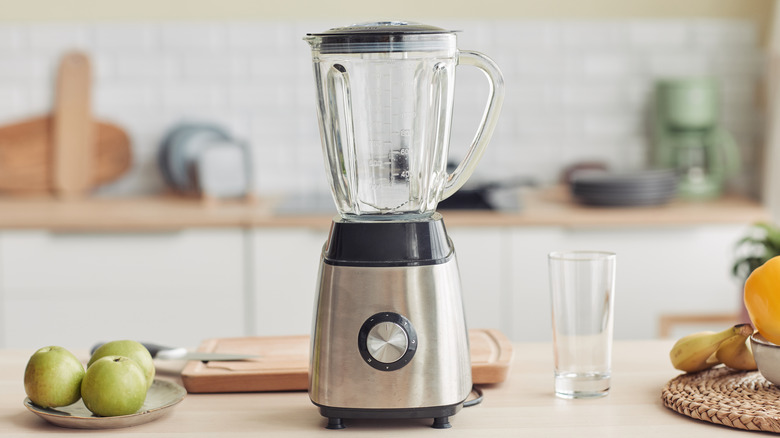Your Kitchen Blender Is The Trick To Perfect Garden Compost
Compost is called "black gold" for a good reason — the organic matter adds a heavy dose of nutrients to the soil, creating a dark mixture that helps your plants grow bigger and healthier. The only downside to compost is that it takes a long time to break down. When waiting for your pile to fully decay, the process could take two weeks but may require up to two years, which forces you to exercise patience. If you would like to speed up the process, you can easily use a kitchen blender to help deliver nutrients to your plants faster. The blender will chop up the organic matter into tiny pieces, which you can add to the soil immediately after. While it won't technically be considered compost yet, the food pieces will be so small that they will decompose at a super fast rate in the dirt, releasing their nutrients in record time.
This not only helps you grow your garden faster, but it can also be a great option for those who are simply casual gardeners. If you don't tinker in the yard enough to have a compost bin in your kitchen (or if the thought of keeping one grosses you out), then this is a great alternative. It allows you to add nutrients to your soil on the fly or whenever the mood strikes. The process of using your blender to create compost starts with adding the right ingredients.
How to use a kitchen blender to create instant compost
To make your own DIY compost, start by collecting all the items you want to mix together in a gallon resealable bag. You want to create an ideal brown-to-green matter ratio, which consists of around four times more "brown" matter than "green" matter. Brown matter is stuff like dead leaves, hay, sawdust, or newspaper scraps which are packed with carbon, while green matter consists of food scraps, coffee grounds, and other things that are rich in nitrogen. If you have too much green matter, it will begin to rot, and you'll end up with a stinky mess in your plastic bag. This is important to control since you will most likely have to keep the bag for a few days until you have enough scraps to blend. You don't want to put gross slime into your blender, so make sure you include enough brown matter.
You can keep the bag next to your cutting board when chopping vegetables and place the scraps inside. Then, take a walk around your yard and collect lots of brown matter to add. Once you have enough food scraps and plant matter, toss it into your blender, add some water, and puree your haul. After the pieces have liquified, carry your blender outside and pour it onto your vegetable patch or flower bed. Grab a small hand shovel and spread it out so it coats the ground evenly, then work it deeper into the dirt.
